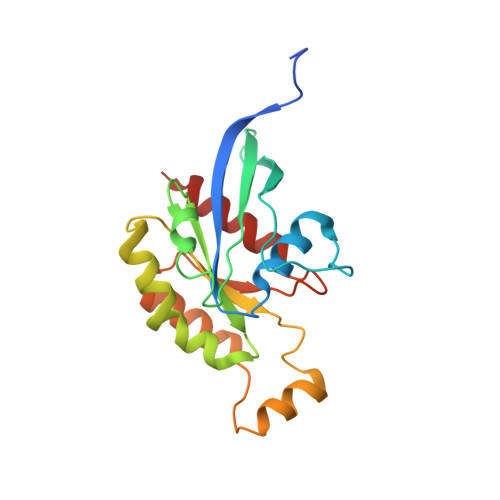An electrostatic steering mechanism of Cdc42 recognition by Wiskott-Aldrich syndrome proteins
Hemsath, L., Dvorsky, R., Fiegen, D., Carlier, M.F., Ahmadian, M.R.(2005) Mol Cell 20: 313-324
- PubMed: 16246732
- DOI: https://doi.org/10.1016/j.molcel.2005.08.036
- Primary Citation of Related Structures:
2ATX - PubMed Abstract:
The specific and rapid formation of protein complexes is essential for diverse cellular processes such as remodeling of actin filaments in response to the interaction between Rho GTPases and the Wiskott-Aldrich syndrome proteins (WASp and N-WASp). Although Cdc42, TC10, and other members of the Rho family have been implicated in binding to and activating the WAS proteins, the exact nature of such a protein-protein recognition process has remained obscure. Here, we describe a mechanism that ensures rapid and selective long-range Cdc42-WASp recognition. The crystal structure of TC10, together with mutational and bioinformatic analyses, proved that the basic region of WASp and two unique glutamates in Cdc42 generate favorable electrostatic steering forces that control the accelerated WASp-Cdc42 association reaction. This process is a prerequisite for WASp activation and a critical step in temporal regulation and integration of WASp-mediated cellular responses.
Organizational Affiliation:
Abteilung Strukturelle Biologie, Max-Planck-Institut für Molekulare Physiologie, Otto-Hahn-Strasse 11, 44227 Dortmund, Germany.
















